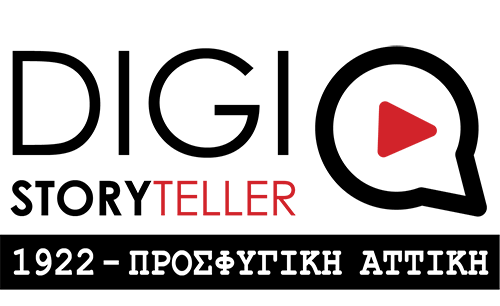The activity of humanitarian and international organizations regarding the refugee relief.
The massive arrival of refugees in Greece triggered multiple efforts towards their relief and temporary settlement. Although the Greek state was initially caught unprepared and could not understand the extent of the problem (the refugees were even asked to pay taxes on the valuables that they carried with them or were confined in the customs because they had no travelling documents), it soon came back in shape and launched initiatives, aided, however, by several Greek and foreign humanitarian organizations.
Apostolos Doxiadis was selected by the revolutionary government of Stylianos Gonatas to lead the refugee relief campaign; the selection was justified by the former’s medical profession as well as by his former proactive stance for the liberation of Eastern Thrace. As Minister of Healthcare, Doxiadis founded the Refugee Relief Fund (December 3rd 1922(, which managed to gather money through state subventions (125 million drachmas) and crowdfunding (5 million drachmas) in order to establish hospitals and medical units, to collect clothes and food and to build temporary accommodation ( the official reports call them “rooms” but people called them “shacks”) in Attica and in the rest of the country.
In September 1923 F.Nansen concluded his report on the rehabilitation of the refugees, which was adopted by the League of Nations. One month later was founded the Refugee Rehabilitation Committee, which would administer an international loan to support the effort of the settlement of the refugees in regions similar to those that they had abandoned. The Committee would undertake its mission in 1924, after the Treaty of Lausanne was signed, which finalized the exchange of populations and put an end to the hopes for the return of the refugees to their hearths.

Το αμερικανικό φορτηγό πλοίο Pensacola, που μετέφερε ανθρωπιστική βοήθεια για τους πρόσφυγες.
Despite the fact that the official foreign international aid was late to come, several humanitarian organizations stood by the side of the refugees from day one, gathering food and clothing, distributing tents and founding hospitals and medical stations. Near East Relief was one of them. It had been founded in 1915 under the title “American Committee for Armenian and Syrian Relief” in order to offer protection and support to the Armenian and Aramean inhabitants of the Ottoman Empire, against whom the Ottoman government has unleashed its wrath. The oragnization’s main aim was the protection of the children. it thus founded orphanages, hospices and schools in the Middle East. When it was made clear that the Ottoman Empire no longer wished to have minorities on its soil, the organization helped evacuate and Greeks of Pontos and Armenians from Asia Minor. By the time of the Asia Minor Catastrophe, the organization was allready experienced and had a yearly budget for its activities. Supported by the ambassador of the United States in Turkey, Henry Morgenthau, as well as by a large number of American citizens, it organized a campaign for the collection of first aid material, it evacuated the schools and orphanages in the east and brought the children safely to Greece and subsequently founded similar institutions in Attica and elsewhere. It also took care of the blind and cared for the vocational training of young people. Constituting a bridge between the States and Greece, Near East Relief managed to put more than 117.000.000 dollars in good use on behalf of the refugees. Its idea to start the “Children’s Crusade”, an awareness-raising campaign starring Jackie Coogan, the renowned “Kid” of Charlie Chaplin’s film, in order to mobilized thousands of micro-donors with the aim of safeguarding nutrition for refugee kids, particularly milk (a bottle a day). The gym club that Near East founded in Kaisariani still bears its name.
Similar activity was undertaken by the organization Save the Children, founded in the UK in 1919, in order to combat childrens’ famine. The organization acted immediately regarding the Greek refugees and created “camps” with tents to shelter them as well as soup kitchens in order to feed children both in Turkey and in Greece
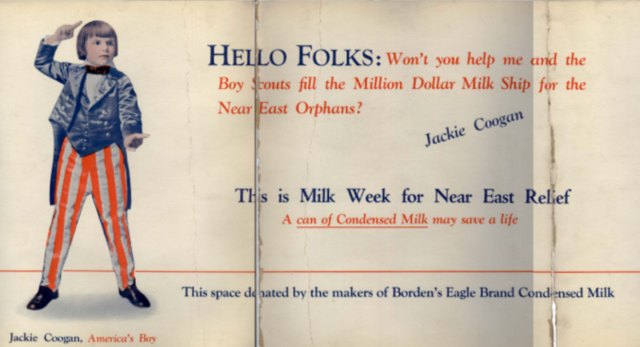
Διαφήμιση της καμπάνιας της Near East Relief με πρωταγωνιστή τον Τζάκι Κούγκαν
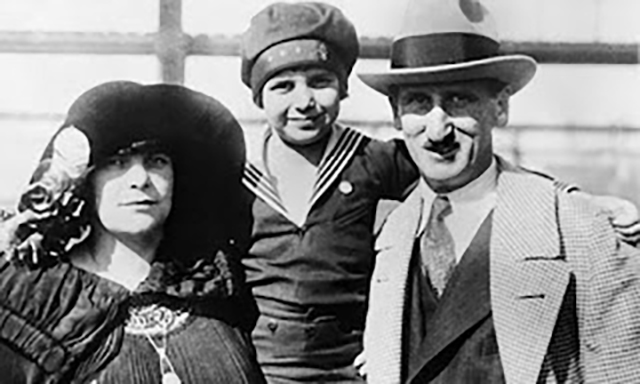
Το κινηματογραφικό “χαμίνι” του Σαρλώ, ο Τζάκι Κούγκαν, επιστρατεύθηκε στην καμπάνια του Near East Relief και ήρθε ακτοπλοϊκά με τους γονείς του ως την Ελλάδα.
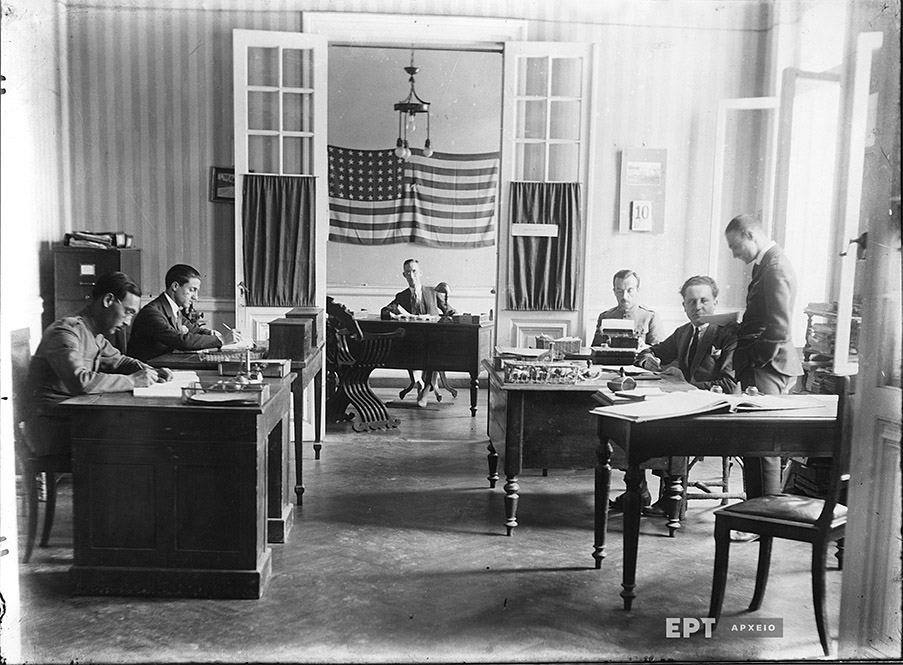
Διαφήμιση της καμπάνιας της Near East Relief με πρωταγωνιστή τον Τζάκι Κούγκαν
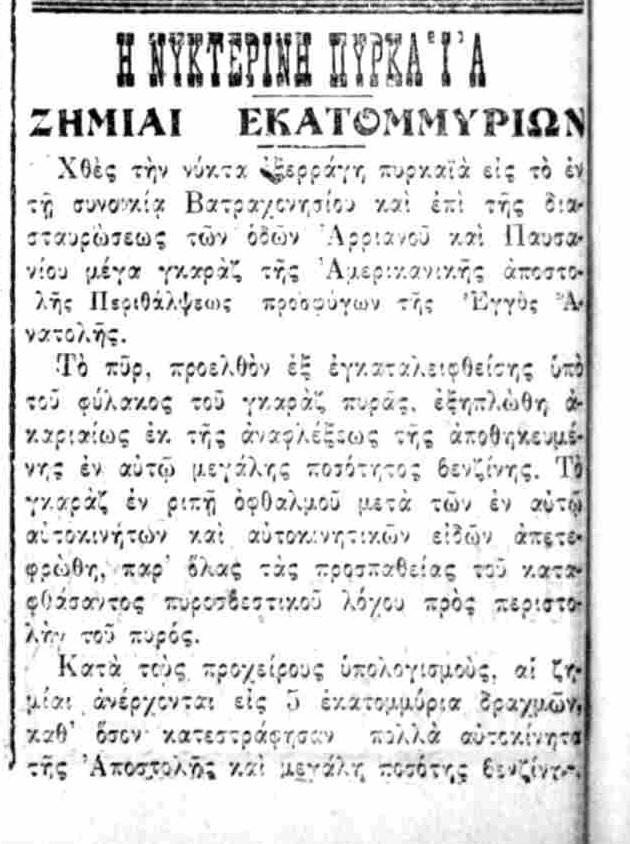
Διαφήμιση της καμπάνιας της Near East Relief με πρωταγωνιστή τον Τζάκι Κούγκαν
The mobilization of the International Red Cross was also enormous, particularly of the USA branch. Experienced as its was from regions under war, the Red Cross concentrated on evacuating refugees who had been trapped in Asia Minor, on aiding hostages return from the “Amele Taburlari”, the Forced Work Batallions, as well as on gathering first aid material for the refugees in Greece. Ships hired by the Red Cross carried daily food and clothes to storage spaces in Piraeus.

To νοσοκομείο του Αμερικανικού Ερυθρού Σταυρού © Library of Congress

The list of humanitarian organizations offering services in the field of healthcare and restitution of the refugees is long. Several smaller organizations sent volunteers; one of them was the Union of American Women, which staffed hospitals and nurseries all over Greece. In this organization female emancipation and scientific formation went hand in hand with the humanitarian action, which had started before the Asia Minor Catastrophe and carried on for a series of years after it.
Greek female organizations, on the other hand, were also immediately mobilized in order to take care of refugees and to undertake the professional formation of young girls, in order to help them find a decent work, avoiding prostitution or forced marriages. Thus, YLCU (Young Ladies’ Christian Union) organized soup kitchens and sawing, weaving and short writing or typing courses, whereas YMCA helped hostage soldiers return from Asia Minor and aided refugees in settlements of Athens and Thessaloniki, particularly Kokkinia and Kalamaria respectively.
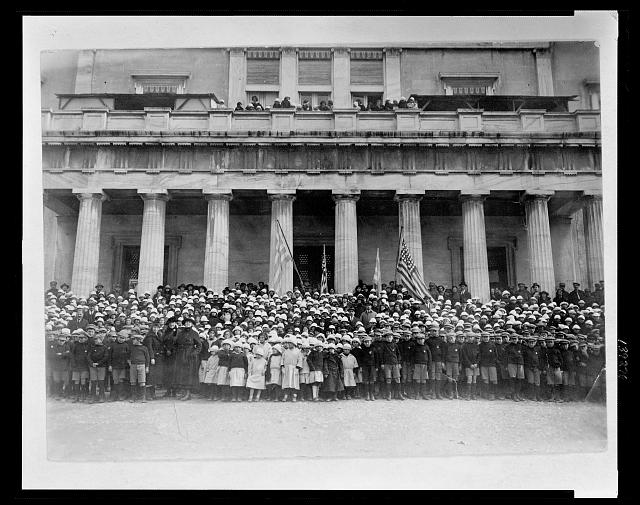
Εκδήλωση φιλανθρωπικών οργανώσεων για τα ορφανά στην Παλιά Βουλή
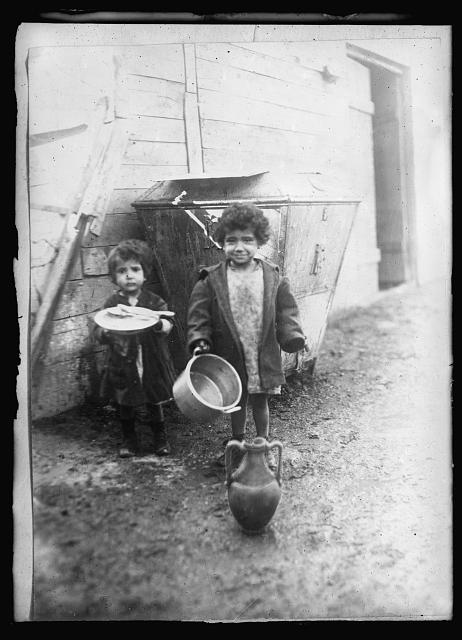
Το βασικότερο μέλημα των ανθρωπιστικών οργανώσεων ήταν η σίτιση των ορφανών και των παιδιών © Library of Congress
